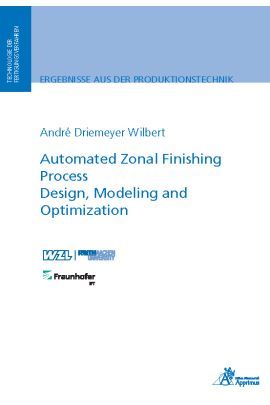Together with the machining tool industry, the mold and die making industry in Europe has an important
presence. However, due to the lack of available automated finishing technologies for free-form surfaces,
the finishing process in the tooling industry is predominantly done manually. The manual finishing of
molds is a time-consuming and cost-intensive process. Furthermore, it is monotonous, and nowadays less
often chosen by workers as a profession, turning the existence of skilled craftsmen a scarce resource
world-wide.
Due to the lack of reasonable automated finishing solutions for complex surfaces, the presented thesis
pursues the aim of developing a system and process capable of substituting the work that is currently
conducted by craftsmen in the mold and die industry.
The thesis pursues a considerably higher degree of automation on the finishing process of steel mold and
dies by the development and use of an industrial robot (IR) system, intending to emulate the actions
conducted by a manual worker. The thesis work outline is based on the process control via an empirical
model to predict the desired surface texture results from the investigated finishing processes, substituting
the knowledge of a manual worker in the selection of abrasive tools and cutting parameters.
Furthermore, due to inherent instability of the abrasive finishing process, the operation of the developed
automated IR finishing approach is supported by an unconventional, at-line surface-quality monitoring
system. The integrated monitoring system, which is similar to the subjective interpretation of a craftsman´s
eye, appraises the finished mold surfaces, with the additional virtue of describing its lack of homogeneity
or its textures in an objective and quantitative form. The gathered surface texture information by the atline
monitoring system allows the progressive texture-improvement process to be constantly observed and
adapted.
The tactic in the investigated finishing process adaption occurs by adjusting it with appropriate zonal
cutting parameters according to the monitored surface qualities and employing it with novel finishing
path strategies. The newly proposed finishing paths, optimized to individual situations of surface
geometry and texture, are built in an intended but not patterned form to emulate the most efficient
strategy currently employed in the finishing procedure of molds and dies, the manually and apparently
random created path tour by the craftsman.
| Autor | Driemeyer Wilbert, André |
|---|---|
| Lieferzeit | 3-4 Tage |
| Gewicht | 0.294 kg |
| Erscheinungsdatum | 12.10.2018 |
Technologie der Fertigungsverfahren
Automated Zonal Finishing Process Design, Modeling and Optimization
Kurzbeschreibung
The thesis pursues a considerably higher degree of automation on the finishing process of steel mold and
dies by the development and use of an industrial robot (IR) system, intending to emulate the actions
conducted by a manual worker. The thesis work outline is based on the process control via an empirical
model to predict the desired surface texture results from the investigated finishing processes.

